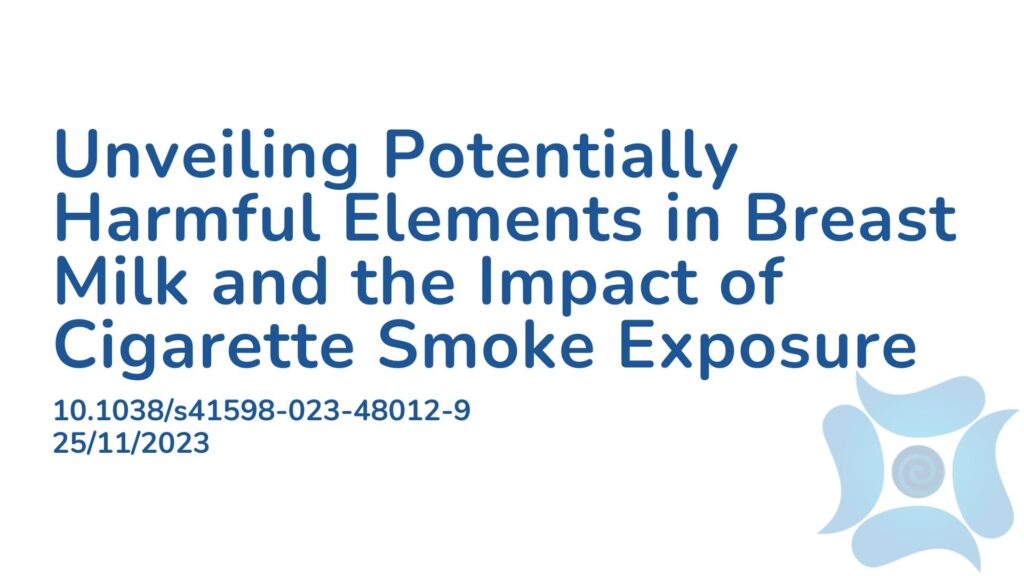Summary:
Breast milk offers vital protection against various diseases and complications, fosters optimal development and reduces the severity of infections for infants. While breastfeeding has demonstrated numerous health benefits, it has also been observed to contain heavy metals, posing potential risks of toxic accumulation for both infants and mothers. Although previous studies have extensively explored trace elements like iron, zinc, copper, and manganese in breast milk, the attention to potentially harmful elements such as lead, cadmium, arsenic, manganese, cobalt, mercury, and chromium is limited. This study addresses the gap by specifically investigating the levels of six potentially toxic elements in breast milk. The focus is on comparing the concentrations in the milk of non-smoking women with those who smoke cigarettes and women exposed to secondhand smoke. The findings demonstrated that exposure to cigarette smoke can elevate the levels of potentially toxic elements in human milk, posing a risk to the health of premature newborns. However, further research is essential to comprehend the potential toxic mechanisms of these metals.
Abstract:
Our study aimed to compare levels of six micro-elements and six potentially toxic elements in the breast milk of non-smoking women compared to those found in women who smoke tobacco and women exposed to second-hand smoke during pregnancy and lactation. This was a cross-sectional study conducted on 100 lactating women in western Iran. The studied subjects were in three groups: passive smokers, active smokers, and a control group. Concentrations of selected trace elements in breast milk (essential and non-essential metals) were determined using ICP-MS. Our results indicated that the parameters of education, fruit consumption, and cosmetics usage had a significant difference among the groups (p < 0.05). Moreover, for trace elements, the Kruskal–Wallis test was statistically significant for arsenic (As), cadmium (Cd), mercury (Hg), and lead (Pb) (p < 0.05). The post hoc Dunn test revealed a significant difference in the levels of As, Cd, Hg, and Pb between non-smoker and passive/active smoker groups (p < 0.05). Our findings illustrate that exposure to cigarette smoke can cause an increase in the level of potentially toxic elements in human milk, which is dangerous for the consumption of premature newborns, but more research is needed to evaluate the potential toxic mechanisms of toxic metals.
Article Publication Date: 25/11/2023
DOI: 10.1038/s41598-023-48012-9



